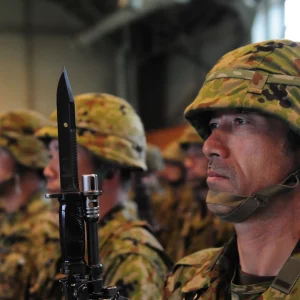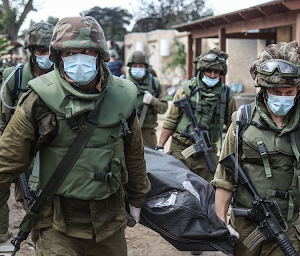It’s over in a second. A quick prick and then you’re done. You don’t feel any different in the moment, but that tiny shot has such far-reaching implications. It symbolizes the pandemic slowly grinding to a halt. For me, getting vaccinated was like finally being able to breathe fresh air after a year. It gave me hope that the world may actually improve. Last semester, I published an article on the COVID vaccine. Since I wrote that article, the vaccine landscape has changed dramatically. Not only have vaccines actually been approved for distribution in the US and worldwide, but millions of people are now getting vaccinated worldwide each day. The vaccines are proving to be effective, a stark difference from the bleak state we were in at at the beginning of this winter. However, there’s still a lot that most people don’t know about COVID vaccines.
Approved Vaccines
While which vaccines have been approved differ based on country, some of the foremost vaccines have shown high efficacy rates. The Pfizer vaccine has shown a 95 percent efficacy rate in clinical trials and has so far been fully approved in Bahrain, Brazil, New Zealand, Saudi Arabia and Switzerland and has been approved for emergency use in Argentina, Australia, Botswana, Canada, Chile, Colombia, Costa Rica, Ecuador, the European Union, Hong Kong, Iceland, Iraq, Israel, Japan, Jordan, Kuwait, Lebanon, Liechtenstein, Malaysia, Maldives, Mexico, Moldova, Mongolia, Norway, Oman, Panama, Peru, Philippines, Qatar, Serbia, Singapore, South Africa, South Korea, Tunisia, United Arab Emirates, United Kingdom and the United States. It has also received emergency use validation from the World Health Organization. Pfizer has set a goal to manufacture 2 billion doses by the end of the year.
Moderna’s vaccine has shown similar efficacy at 94.5 percent. It has been fully approved for usage in Switzerland and approved for emergency use in Canada, the European Union, Iceland, Israel, Mongolia, Norway, Qatar, Singapore, United Kingdom, United States and Vietnam. Moderna has also set a large production goal: to manufacture 600 million to 1 billion doses in 2021.
AstraZeneca and Oxford’s vaccine has been fully approved in Brazil and given emergency use approval in Algeria, Argentina, Australia, Bahamas, Bangladesh, Bahrain, Bhutan, Botswana, Brazil, Canada, Chile, Colombia, Dominican Republic, Egypt, El Salvador, the European Union, Ghana, Hungary, Iceland, India, Indonesia, Iran, Iraq, Kuwait, Liechtenstein, Malaysia, Maldives, Mexico, Moldova, Mongolia, Morocco, Nepal, Nigeria, Norway, Pakistan, Papua New Guinea, Philippines, Saudi Arabia, Seychelles, Sri Lanka, South Africa, South Korea, Taiwan, Thailand, Ukraine, United Kingdom and Vietnam. It has also received support from the World Health Organization, the Africa Regulatory Taskforce and the Caribbean Regulatory System.
Aside from these three vaccines, several others have also received some form of approval. CanSino’s 1 shot vaccine with 65.28 percent efficacy has been approved in some form in 3 countries. Johnson and Johnson’s 1 shot vaccine showed 72 percent efficacy in clinical trials in the US. Johnson and Johnson has promised doses to the European Union, the United States and many countries in Africa. Sinopharm’s vaccine with 79.34 percent efficacy has been fully approved, emergency authorized or limited use approved in a multitude of countries. Sinovac has made deals with 11 countries or regions to distribute its vaccine. However, Sinovac’s vaccine showed widely differing efficacy, with an estimate of 50.38 percent efficacy in clinical trials in Brazil and 83.5 percent efficacy in Turkey.
Other vaccines are expected to be approved soon such as one developed by American company Novavax. In trials in the UK, Novavax’s data indicated that the vaccine about 89.3 percent effective. In the second quarter of this year, Novavax expects to apply for approval from the FDA.
The Global Vaccination Campaign
Vaccines have been overall more effective than most people could have hoped. The World Health Organization described the global vaccine effort as the “performance of a lifetime.” Worldwide, over 200 vaccine candidates are being tested and developed, marking one of the most massive scientific undertakings of our lifetimes. As of Easter, 649 million vaccine doses had been injected into arms worldwide, which amounts to about 8.5 doses for every 100 people. Leading in per capita vaccinations are Israel, the Seychelles and the United Arab Emirates alongside North America as the leading continent. However, global coordination is required to improve the vaccine distribution process. Thus far, the WHO has been critical in signing off on vaccines and assisting countries with their national vaccination distribution channels. The initiative COVAX was created to distribute vaccines worldwide with a focus on low and medium income countries. By the end of 2021, COVAX hopes to vaccinate 20 percent of the world’s population. Of all doses purchased, COVAX makes up approximately 13 percent. In total, enough doses have been purchased to vaccinate 80 percent of the world’s adult population.
However, vaccine equity is a concept that is often overlooked. Efforts like COVAX have been prevented from reaching their full efficacy due to vaccine nationalism, which is a phenomena in which countries with more economic resources hoard vaccines. COVAX only has the resources to vaccinate less than half of the populations of low and middle income nations. 80 percent of those living in low resource areas or situations will not receive a COVID vaccine this year. While high income countries represent only about one-fifth of the world’s adult population, they own more than half of all vaccine doses. High income countries purchased enough doses to more than twice cover the needs of their populations. Even though some high income countries like France and Norway will donate their extra doses, this demonstrates the inequities in vaccine distribution. Vaccine nationalism has advantaged wealthier countries at the expense of less wealthy ones. The WHO and the Pope have both called for more equitable distribution.
Other issues plague the vaccine distribution process. Difficulties transporting supplies between countries and finding cold storage availability affect the places that vaccines are distributed to. The current pace of vaccination is also too slow to achieve global herd immunity anytime soon. At the current pace of 6.7 million doses being distributed every day, it would take 4.6 years to get to herd immunity. Obviously, another 5 years of the pandemic is not a sustainable lifestyle for public health infrastructure, the global economy or even individuals’ mental health.
Variants of COVID-19 also present a significant challenge for the vaccines we have developed so far. The efficacy of vaccines against variants B.1.1.7. (a variant that originated in the UK) and B.1.351. (a variant that originated in South Africa) have been tested. While the vaccines offered better protection against the UK variant, both variants weakened the vaccines’ efficacy. After the second vaccine dose, 14x fewer neutralizing antibodies were produced to fight off the South African variant than the more common strains of COVID-19. The news isn’t all bad though. Vaccines still offer some protection against these new variants. It is also relatively simple to change the composition of existing vaccines so they can better fight variants of the disease. Additionally, vaccines don’t only help our immune systems by producing neutralizing antibodies. Vaccines also supplement other methods of immune defense, such as T-cells, that can still help fight off variants of the virus.
Vaccines should be enough to end the pandemic. In an interview with Trib Live, Monica Gandhi, an infectious disease doctor at UCSF, predicts shots can end the pandemic because the T-cells that vaccines help to supplement will be able to fight off all variants. Similarly, Galit Alter, a professor at Harvard Medicine, said current vaccines should be effective enough to end the pandemic. A recent CDC study showed vaccines reduced COVID infections of all kinds, which puts to rest the idea that vaccines may only prevent symptomatic infection, thereby enabling the virus to spread silently through the population. Vaccines have been proven to produce a 90 percent reduction in all infections. Additionally, the vaccines have shown some efficacy against all known variants. The signs point to vaccines being the key to a return to normal. However, there’s a lot that needs to be done still before the world can finally put this awful tragedy firmly behind us.
Featured Image Source: AP Photo/Ted S. Warren






Comments are closed.